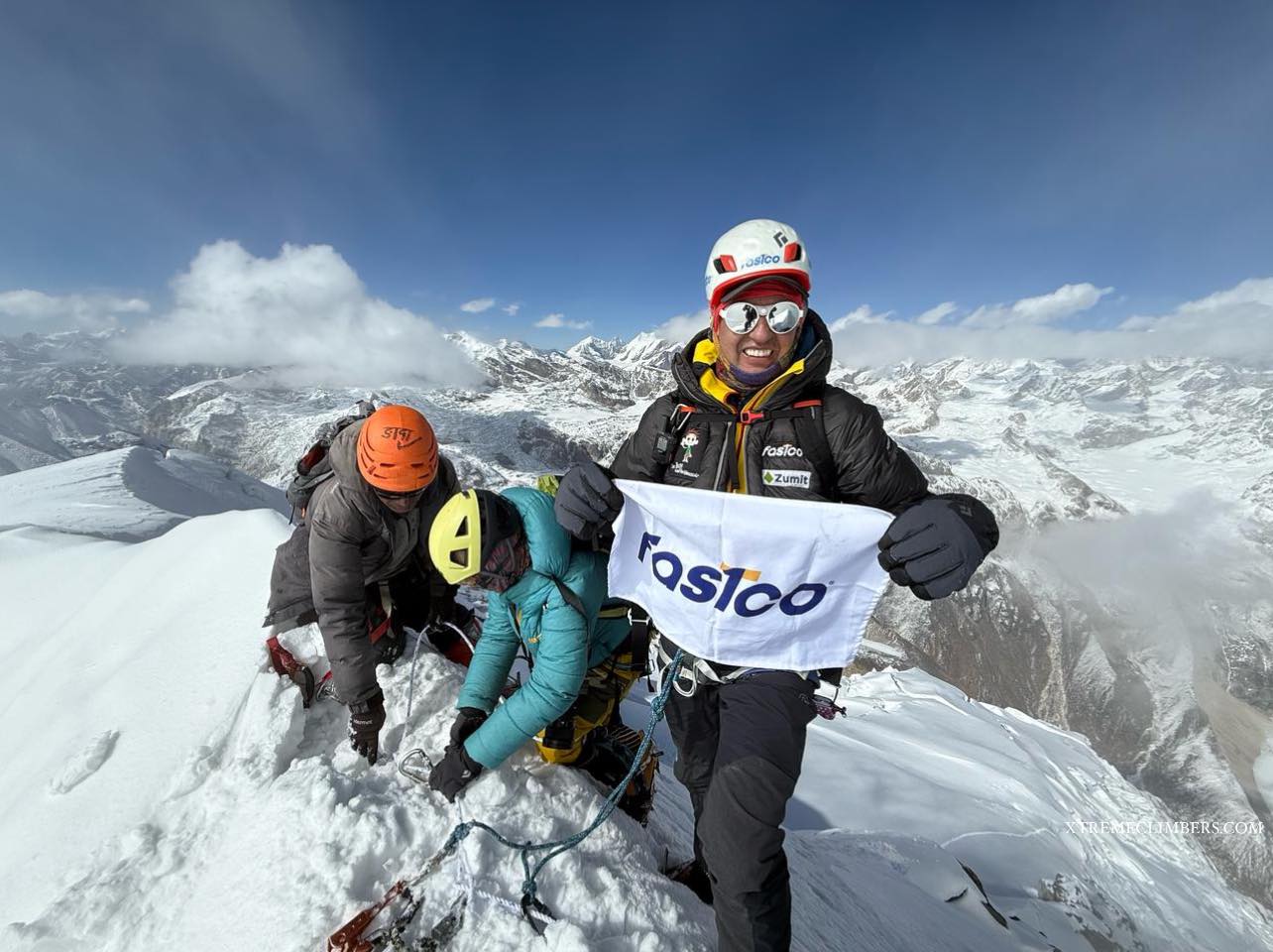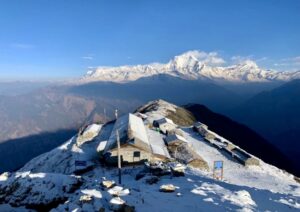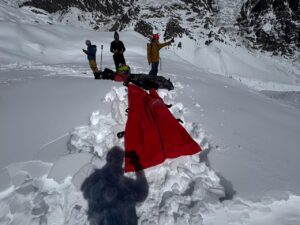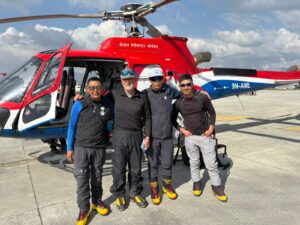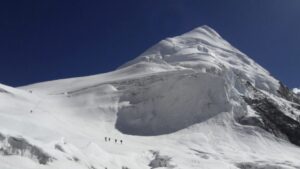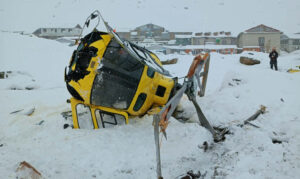This has to be one of Nepal’s most confusing peaks. Barely hours after we read of a mysterious expedition to Sharphu IV, a 6,000’er near Kangchenjunga, with just one person on the permit, we received a press release about the successful ascent. In the end, it was neither solo nor alpine-style…and we are not even sure which mountain they climbed.
The climber with a permit was Hernan Leal from Chile. He was guided by Lhakpa Chhiri Sherpa and Ngada Sherpa. Purnima Shrestha, a Nepalese photojournalist and regular on expeditions to 8,000m peaks, was also on the team. Shrestha made headlines last year by climbing Everest three times in a single season.
The press release, shared by local outfitter Xtreme Climbers, provides few details but reveals that the team made several rotations on the mountain, which precludes an alpine-style ascent. They mention a highly demanding route with a TD/6 grade of difficulty. TD stands for tres dificile (“very difficult”) on the French grading scale. Only EX (extremement dificile) is harder. The “6” refers to Alpine Grade 6.
Finally, the team claims a first ascent of the 6,433m peak. But we are not really sure which peak they have actually climbed.
Confusing names, wrong altitudes
The mountain is definitely not the same mountain whose Eastern summit was first climbed by Stefano Ragazzo and Silvia in 2022. The Italian pair described it as the eastern point of Sharphu IV or Sato Peak. In his report for the American Alpine Journal, Ragazzo noted there was a lot of confusion regarding the ascents and altitudes of the six Sharphu peaks, located near Kangbachen in the Kangchenjunga region.
The Italians said Sharphu IV is also called Sato Peak in Nepal, although they pointed out that an earlier Japanese team had named a Sato Peak in the same range, but it was lower and further north than theirs.
The Sato Peak for which they had a permit was 6,164m. The Eastern point that they reached, which they called the Sato Pyramid, was 6,100m. Ragazzo also noted that the altitude of Sharphu III, which they had originally planned to climb, was wrong in the Ministry’s files.
Other sources in Nepal have confirmed to ExplorersWeb that the Ministry’s files are incorrect for all the altitudes of the Sharphu peaks.
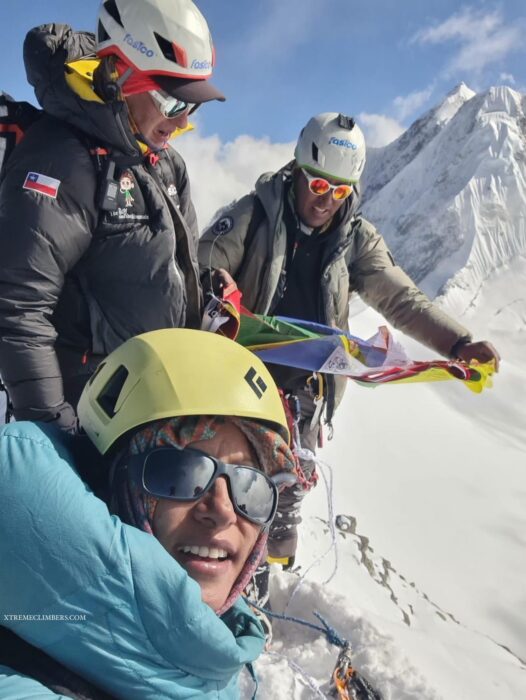
Hernan Leal and Purnima Shrestha with one of the Sherpa guides on the summit. Photo: Xtreme Climbers
Climbed in 1962. Maybe
The overall confusion makes it difficult to know if the team has really done a first ascent.
The Sharphu IV listed by Nepal’s Ministry is 6,433m:
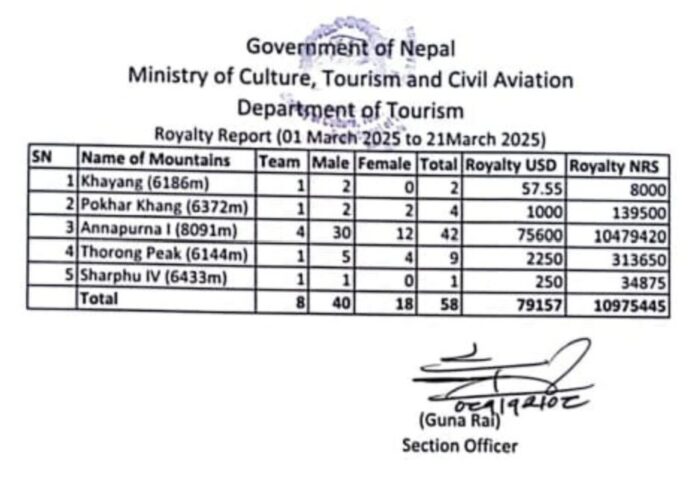
List of climbing permits issued by Nepal’s Department of Tourism, including one for Sharphu IV (6,433m).
That is also the altitude reported by the Xtreme Climbers team that summited yesterday. They claim theirs is the first ascent.
However, crosschecking with The Himalayan Database, Sharphu IV appears as a 6,172m peak, first climbed in 1962 by a Japanese team from Osaka University led by Sasuke Nakao. It mentions that Sharphu IV is also called Nupchu Peak.
To make things more confusing, the Japanese reported the summit altitude as 6,044m, and also admitted that they originally thought they were climbing Ohmi Kangri (7,028m). They reported the hardest part of their ascent was finding a route across the Nuptchu Glacier. They then mounted the east ridge, which marks the border between Nepal and Tibet.
“From Camp 3, it was not hard to reach the summit,” the team reported in the AAJ.
By the way, The Himalayan Database lists the altitudes of the Sharphus below. Note how the first Sharphu I is 6,433m. However, the government’s Nepal Peak Profile site lists Sharphu I as 7,070m.
In short, the locations, altitudes, and identities of the Sharphu peaks are a mess.

Altitudes and alternative names of the six Sharphu peaks, according to The Himalayan Database

Altitude of Sharphu I, according to a Nepal government site. Photo: Screenshot
Conclusion: details requested
There is no way to confirm but also no reason to doubt the team may have done a first ascent, or at least a first official ascent (not counting climbs without a permit), of a remote mountain over 6,000m in the spectacular Kangchenjunga region. Unfortunately, this peak is so confusing in so many ways that it is hard to know what to make of the climb. We have asked the team for more details.
